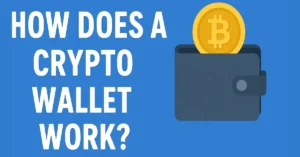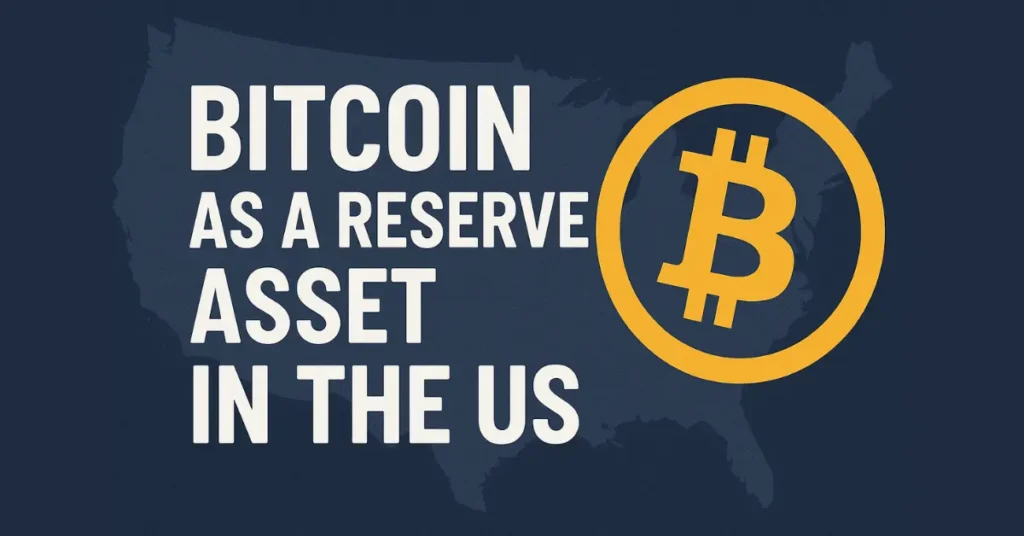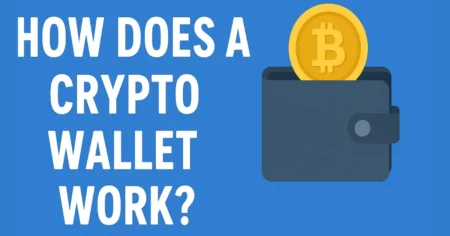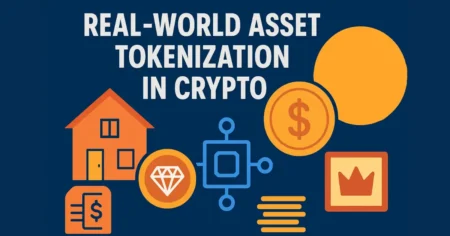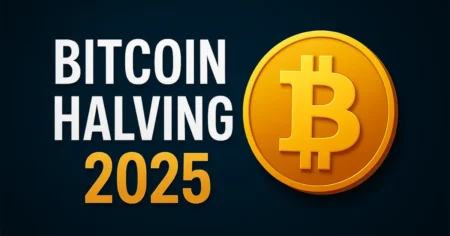Introduction to Bitcoin and the Concept of Reserve Assets
When people hear the term “reserve asset,” they often think of gold bars stacked in underground vaults or foreign currencies held by central banks. Reserve assets are essentially financial tools that governments or central banks keep on hand to stabilize their economies, strengthen international trade, and maintain trust in their financial system. Historically, these assets have included gold, foreign exchange reserves, and government bonds.
Bitcoin, however, is a new player in this long-running story. It wasn’t created by a government or central bank. Instead, it emerged in 2009 as a peer-to-peer digital currency that runs on a decentralized network. For years, it was dismissed as little more than internet money. But over time, it has matured into a recognized financial instrument, attracting institutional investors, hedge funds, and even corporate treasuries.
The conversation around Bitcoin as a reserve asset in the US isn’t happening in isolation. It comes at a time when traditional systems face pressure from inflation, rising debt, and geopolitical competition. To understand why Bitcoin is now part of the reserve asset debate, we need to first look at how reserves have evolved and why they matter.
What is a Reserve Asset?
A reserve asset is a financial instrument that a country’s central bank can use to stabilize its currency, settle international debts, and ensure liquidity during economic shocks. Reserve assets are valuable because they are highly liquid and widely accepted. For example, when a country faces a balance of payments crisis, it can tap into its reserves to smooth over short-term instability.
In practice, reserve assets include gold, US Treasury bonds, Special Drawing Rights (SDRs) from the International Monetary Fund (IMF), and foreign currencies like the euro or yen. Their main purpose is security. They function like a financial safety net for nations.
Bitcoin challenges this definition because it is not backed by a government, does not yield interest, and is highly volatile. But it also offers unique properties—scarcity, portability, and decentralization—that have never been seen in a reserve asset before.
The Evolution of Reserve Assets in Global History
Reserve assets have always shifted with global power. In the 19th century, gold dominated international trade. After World War II, the Bretton Woods system established the US dollar as the world’s primary reserve currency, backed by gold. When President Nixon cut the dollar’s tie to gold in 1971, the world entered a fiat system dominated by US Treasuries and foreign currency reserves.
Today, the dollar remains supreme, but cracks are forming. Rising US debt, inflation fears, and geopolitical shifts are prompting some nations to diversify their reserves. China, for example, has steadily increased its gold holdings while experimenting with digital currencies. This evolution sets the stage for Bitcoin to be discussed as a modern alternative.
Why Bitcoin is Entering this Conversation
Bitcoin is entering the reserve asset conversation for three main reasons. First, its fixed supply of 21 million coins makes it immune to monetary debasement—a key weakness of fiat currencies. Second, its decentralized nature makes it independent of any single government, creating a unique hedge against political risk. Third, its global adoption is growing, with institutions and even countries showing interest.
The question is no longer whether Bitcoin will play a role in global finance. The question is whether the US will embrace it early or wait until other nations move ahead.
The Current US Reserve Asset Landscape
The United States currently maintains the world’s largest reserves, but the makeup of these reserves reveals a traditional structure. Most US reserves are in the form of gold and foreign currency assets, with a significant emphasis on US Treasuries as instruments of global trust.
The Dominance of the US Dollar and Treasuries
The dollar is the backbone of global finance. More than 58% of the world’s reserves are held in dollars, and nearly 90% of international trade transactions involve the dollar in some way. This dominance is reinforced by US Treasuries, which are considered the safest debt instruments in the world due to America’s unmatched creditworthiness and liquidity.
Holding US Treasuries allows central banks to have a reliable, interest-bearing asset that can be liquidated quickly in times of crisis. For decades, this has been the standard. But in recent years, ballooning US debt levels—now over $30 trillion—raise questions about how sustainable this dominance will remain.
Gold’s Traditional Role as a Backup Reserve
Gold is often seen as the “ultimate reserve asset.” It has no counterparty risk, is universally recognized, and has held value for thousands of years. The US currently holds over 8,000 metric tons of gold, the largest stash in the world. Gold played a central role in the Bretton Woods era and continues to act as a backup reserve even in today’s fiat system.
However, gold has limitations. It is difficult to transport, expensive to store, and cannot be used in digital transactions without intermediaries. Bitcoin, in contrast, solves some of these issues with its digital nature and near-instant transferability.
How Economic Shifts are Opening Space for Alternatives
Global economic shifts are creating an opening for assets like Bitcoin. Inflation surged in recent years, eroding trust in fiat money. At the same time, geopolitical rivalries, such as the US-China competition, have driven countries to rethink their reserve strategies.
For the US, maintaining dominance requires innovation. If America ignores digital alternatives, other nations may adopt them and gradually reduce reliance on the dollar. This is where Bitcoin enters the picture—not as a replacement for the dollar today, but as a strategic addition for resilience in the future.
Why Bitcoin is Being Considered as a Reserve Asset
Bitcoin offers a unique set of qualities that make it appealing in theory as a reserve asset, though with notable caveats.
Fixed Supply and Scarcity Compared to Fiat Currency
Unlike fiat currencies, which can be printed endlessly, Bitcoin has a fixed supply of 21 million coins. This scarcity mirrors the qualities of gold but in a digital format. In a world where central banks often expand the money supply during crises, Bitcoin represents a hedge against monetary inflation.
Scarcity has real-world value. When investors fear inflation, they often move to assets that cannot be diluted—gold, real estate, or increasingly, Bitcoin. If the US held Bitcoin reserves, it would signal a commitment to diversification beyond assets that can be manipulated through policy decisions.
Decentralization and Independence from Government Control
One of Bitcoin’s most radical features is decentralization. No single government or institution controls the Bitcoin network. This makes it immune to censorship and resistant to manipulation. For a reserve asset, this independence is both a strength and a challenge.
From a strategic standpoint, the US adopting Bitcoin would mean holding an asset that cannot be weaponized by rivals. It would also mean aligning with an open global financial system. However, this same decentralization removes the control that governments usually prefer over their reserves.
Inflation Hedge Narrative and Macroeconomic Factors
The inflation hedge narrative has been one of Bitcoin’s strongest selling points. During periods of money printing and economic stimulus, Bitcoin has often surged as investors sought protection. While its correlation with inflation is debated, the perception of Bitcoin as “digital gold” has stuck.
For the US, adding Bitcoin to reserves could act as insurance against extreme monetary or debt crises. Even holding a small percentage would diversify risk and potentially enhance resilience.
The Strategic Case for the US Holding Bitcoin
If the US were to strategically accumulate Bitcoin as part of its reserves, it would achieve multiple benefits—financial, geopolitical, and technological.
Potential to Strengthen Financial Resilience
Reserves exist to provide a cushion during crises. By including Bitcoin, the US could add a non-correlated asset to its holdings. Bitcoin’s price often moves independently of traditional markets, which can help offset risks tied to bonds or foreign currencies.
This kind of diversification is common in personal investing. Nations, too, can benefit from not putting all their eggs in one basket. Even a modest allocation to Bitcoin could strengthen America’s financial resilience against global shocks.
Protection Against Foreign Debt Risks
One of the biggest challenges for the US is its rising debt and dependence on foreign creditors. If confidence in Treasuries falters, the dollar’s dominance could weaken. Holding Bitcoin as a reserve asset would provide a hedge against these debt risks.
It would also signal to global markets that the US is prepared for a new era of finance—one where digital assets play a role alongside traditional instruments.
Maintaining Innovation Leadership in Digital Finance
America has always been a leader in financial innovation, from Wall Street to Silicon Valley. By holding Bitcoin as a reserve asset, the US would reinforce its position at the forefront of digital finance.
This would also prevent rivals from outpacing the US in the digital asset race. China, for example, is aggressively pursuing its digital yuan project. If the US were to ignore Bitcoin, it risks losing influence in the next phase of global finance.
Challenges and Risks of Adopting Bitcoin as a Reserve Asset
Despite the strategic upside, Bitcoin is not without significant challenges and risks.
Price Volatility and Market Immaturity
The biggest hurdle is volatility. Bitcoin can swing 10% in a single day. Such price fluctuations undermine its role as a stable reserve asset. While long-term trends show growth, central banks typically prefer low-risk, predictable assets.
Bitcoin’s market is also relatively small compared to traditional reserves. At a total market cap of around $1 trillion, it cannot yet absorb the same level of national-scale transactions that gold or Treasuries can.
Political and Regulatory Uncertainties
Adopting Bitcoin as a reserve asset would trigger political debate in the US. Critics would argue that Bitcoin undermines the dollar or invites unnecessary risk. Regulation around cryptocurrencies is still evolving, and there is no clear framework for how a central bank would custody or manage Bitcoin reserves.
The uncertainty could stall serious discussion. Until there is clarity, Bitcoin’s place in reserves remains theoretical.
Environmental Concerns Around Bitcoin Mining
Another challenge is the environmental debate. Bitcoin mining consumes significant energy, and critics argue it contributes to climate change. For the US government to adopt Bitcoin as a reserve asset, it would need to address these concerns—likely by supporting green mining initiatives or promoting cleaner energy use.
While the environmental impact is often overstated compared to global banking or gold mining, it remains a key narrative obstacle in political circles.
Global Examples and Signals to Watch
The United States is not the first nation or institution to weigh the idea of Bitcoin as part of its financial reserves. Looking abroad and at the private sector gives useful insights into what might work, what might fail, and how the US could approach such a strategy.
El Salvador’s Adoption and Lessons Learned
El Salvador made headlines in 2021 when it became the first country to adopt Bitcoin as legal tender and later announced purchases of Bitcoin for its national reserves. The experiment has been controversial. Critics argue that volatility has made the country’s finances more unstable, while supporters claim it has attracted global investment and tourism.
For the US, El Salvador’s case is less about copying policy and more about observing results. It shows that sovereign nations can hold Bitcoin as part of their reserves, but scale matters. What works for a small economy may play out very differently in the largest economy in the world.
Central Banks Experimenting with Digital Reserves
Several central banks are researching digital currencies and reserve diversification. The People’s Bank of China has been developing its digital yuan, while Russia and Iran have explored using Bitcoin in trade to bypass sanctions. These moves highlight a growing trend: digital assets are being considered as tools for reserve management and trade settlement.
The US cannot afford to ignore these signals. If rival powers begin leveraging Bitcoin or other digital currencies at scale, the US risks losing influence in the financial system it once dominated.
Growing Corporate Adoption as a Reserve Strategy
Beyond governments, corporations have already begun using Bitcoin as a treasury reserve asset. Companies like MicroStrategy, Tesla, and Square (now Block) have converted part of their cash reserves into Bitcoin. Their reasoning is straightforward: hedge against inflation, protect shareholder value, and align with the future of digital finance.
This corporate adoption sends a strong signal. If private companies are finding value in holding Bitcoin as reserves, central banks and governments may eventually follow. The US could take cues from these corporate experiments to develop its own playbook.
The Geopolitical Angle: Bitcoin and US Global Power
Bitcoin is not just a financial asset—it has geopolitical implications. For the US, the question of whether to adopt Bitcoin as a reserve asset is tied to maintaining global dominance, particularly in the face of rising competition.
Could Bitcoin Strengthen or Weaken the Dollar’s Dominance?
One concern is whether Bitcoin would undermine the US dollar’s status as the world’s reserve currency. On one hand, holding Bitcoin could diversify and strengthen America’s financial base. On the other hand, widespread Bitcoin adoption could reduce reliance on the dollar in global trade.
The likely outcome lies somewhere in between. Bitcoin is unlikely to replace the dollar anytime soon, but it could complement it. A hybrid reserve system, where the dollar remains dominant but digital assets play a supporting role, seems more realistic.
Strategic Competition with China and Other Nations
China has taken a cautious but strategic approach to digital assets. While it banned Bitcoin mining domestically, it has aggressively pursued its central bank digital currency (CBDC). The digital yuan could become a tool in international trade, challenging the dollar’s dominance in certain regions.
If the US fails to innovate with Bitcoin or other digital reserves, it risks ceding ground to China. Bitcoin could serve as a counterbalance, reinforcing America’s financial influence in a digital age.
Bitcoin as a Tool in Sanctions and Global Trade
The US often uses financial sanctions as a tool of foreign policy, relying on dollar dominance to restrict access to global markets. Bitcoin complicates this strategy because it allows transactions outside the traditional financial system.
This dual nature—both a challenge and an opportunity—makes Bitcoin geopolitically significant. By holding reserves in Bitcoin, the US could learn how to integrate digital assets into its financial toolkit while maintaining leverage over global trade.
Technological Infrastructure and Custody Considerations
Even if the US decided to hold Bitcoin as a reserve asset, the practical side of custody and security would be critical. Unlike gold or Treasuries, Bitcoin exists in a digital form that requires new infrastructure for safekeeping.
Safe Storage and National Security Concerns
Bitcoin’s security depends on cryptographic keys. If a government loses access to its keys, the Bitcoin is gone forever. This creates a national security challenge for a country like the US. Any reserve system would need robust custody solutions, ranging from secure hardware to cold storage facilities designed to withstand cyberattacks.
This raises questions: Should Bitcoin reserves be held by the Federal Reserve, the Treasury, or a new agency specifically tasked with digital asset security? Each option carries implications for oversight, accountability, and resilience.
Role of Private Companies in Custody Solutions
Private companies like Coinbase and Fidelity have already built custody solutions for institutional clients. The US could potentially partner with these firms to manage part of its reserves, leveraging their expertise.
However, outsourcing custody raises risks. Entrusting national reserves to private corporations could create vulnerabilities. A hybrid approach, where the government develops its own systems while working with private custodians, may be the most balanced solution.
The Rise of Bitcoin ETFs and Institutional-Grade Tools
Recent approval of Bitcoin exchange-traded funds (ETFs) in the US has made institutional exposure easier. While ETFs are not a direct replacement for holding Bitcoin on-chain, they represent a stepping stone toward broader adoption.
These tools could help the US gradually build exposure without jumping straight into full-scale Bitcoin custody. Over time, the infrastructure developed for ETFs and institutional-grade products could support a government-level reserve strategy.
Economic Implications of US Bitcoin Reserves
The economic impact of the US adopting Bitcoin as a reserve asset would ripple through both domestic and global markets.
Impact on US Debt and Monetary Policy
The US relies heavily on its ability to issue debt through Treasuries. If Bitcoin reserves were added, it could change how investors view America’s balance sheet. On one hand, Bitcoin could be seen as a modern hedge that strengthens confidence. On the other hand, it could raise doubts about the stability of traditional debt instruments.
The Federal Reserve would also face challenges. Monetary policy tools like interest rate adjustments may not align well with a reserve system that includes Bitcoin, since Bitcoin cannot be manipulated or printed.
Effect on Inflation Expectations
If the US adopted Bitcoin as a reserve, it could signal to the world that the government acknowledges inflation risks. This could either boost confidence by showing foresight or alarm markets by suggesting that inflation is worse than reported.
Either way, Bitcoin’s presence in reserves would change how investors and citizens perceive America’s inflation outlook. The symbolic impact may be as significant as the economic one.
Potential Shifts in Global Investor Confidence
International investors watch US reserve policies closely. Holding Bitcoin could send a powerful signal of innovation and adaptability. It might encourage other nations to follow suit, leading to a gradual global shift toward digital reserves.
Alternatively, it could spook conservative investors who see Bitcoin as too volatile. The outcome would depend on how carefully and gradually the US integrates Bitcoin into its reserves.
Public Perception and Political Debate
Adopting Bitcoin as a reserve asset wouldn’t be just a financial decision. It would also involve managing public opinion and navigating political divides.
How US Citizens View Bitcoin Compared to Gold
Many Americans still trust gold more than Bitcoin. Gold has a long history, while Bitcoin is only 15 years old. Yet younger generations are increasingly comfortable with digital assets, viewing Bitcoin as a legitimate store of value.
If the government adopted Bitcoin reserves, it would need to communicate clearly why this move benefits citizens and the economy. Without broad support, such a decision could face significant backlash.
Partisan Divides on Digital Currency Adoption
US politics are polarized, and Bitcoin adoption would likely become a partisan issue. Some lawmakers see digital assets as tools for innovation and financial freedom, while others view them as threats to financial stability.
This divide could slow policy progress. For Bitcoin to be accepted as a reserve asset, it would require bipartisan support, or at least enough consensus to move forward.
Media Narratives Shaping the Conversation
Media coverage plays a large role in shaping public opinion. When Bitcoin prices rise, the media frames it as a revolution. When they crash, it’s often described as a bubble or scam.
These narratives could heavily influence how the public and politicians view Bitcoin as a reserve asset. Managing communication effectively would be essential to avoid panic or misunderstanding.
Pathways for the US to Integrate Bitcoin as a Reserve
If the US ever decides to adopt Bitcoin as a reserve asset, the process will likely be gradual and strategic. A sudden move could disrupt markets, while a phased approach would allow for learning and adjustment.
Gradual Accumulation Through Treasury Purchases
One pathway is for the US Treasury to begin small, incremental purchases of Bitcoin. This could be done discreetly, just as governments quietly acquire gold over time. A gradual strategy would minimize price shocks and allow the government to build reserves without triggering panic or hype.
For example, if the US allocated even 1% of its reserves to Bitcoin, it would send a strong signal without risking financial stability. Over time, this percentage could increase as confidence in Bitcoin’s role grows.
Partnerships with Private Sector Custodians
The US could also work with established private companies to handle the technical side of Bitcoin custody. Firms like Fidelity, Coinbase Custody, and NYDIG already manage billions in digital assets for institutions.
A partnership approach would reduce the government’s learning curve while ensuring strong security practices. Eventually, the US could transition to its own national custody system once it develops the necessary expertise.
Incentivizing Mining and Domestic Bitcoin Infrastructure
Another pathway is for the US to build out its Bitcoin infrastructure. By supporting domestic mining with renewable energy, the US could secure a reliable supply of Bitcoin while also addressing environmental concerns.
Encouraging Bitcoin companies to operate within US borders would not only boost reserves but also strengthen the economy. This dual benefit—financial and industrial—could make Bitcoin integration more politically palatable.
Risks of Inaction: What if the US Ignores Bitcoin?
Just as there are risks in adopting Bitcoin, there are also risks in doing nothing. Ignoring Bitcoin could leave the US vulnerable in ways that only become clear when rivals take advantage of its absence.
Other Nations Gaining First-Mover Advantage
If countries like China, Russia, or even smaller nations continue to experiment with Bitcoin reserves, they may build experience and credibility that the US lacks. A first-mover advantage could give these nations influence in shaping digital reserve norms and practices.
For the US, which has historically set global financial standards, falling behind in this area could be a major strategic loss.
Possible Erosion of US Financial Dominance
The US dollar’s dominance is not guaranteed forever. If other nations diversify away from the dollar and into Bitcoin or other digital assets, America’s financial influence could weaken.
Resisting change may seem safe in the short term, but over the decades, it could result in the erosion of dollar supremacy. A measured adoption of Bitcoin could act as insurance against such a decline.
Innovation Drain and Brain Drain Risks
The digital asset industry is global and highly mobile. If the US government continues to sideline Bitcoin, innovators and capital may flow to friendlier jurisdictions. This brain drain could harm the US economy and diminish its leadership role in technology.
Bitcoin reserves could serve not only as a financial strategy but also as a signal that the US is open to leading in digital innovation.
Predictions for the Future of Bitcoin as a US Reserve Asset
The debate over Bitcoin as a reserve asset is still in its early stages, but possible scenarios are already taking shape.
Near-Term vs. Long-Term Scenarios
In the near term, it’s unlikely that the US will fully adopt Bitcoin reserves. Political resistance, volatility, and infrastructure challenges remain significant. However, small-scale pilot programs or symbolic purchases could happen within the next decade.
In the long term, as Bitcoin matures and volatility decreases, broader adoption becomes more plausible. A slow integration into reserve systems could take place over 20 to 30 years.
Hybrid Reserve System Combining Traditional and Digital Assets
A likely outcome is a hybrid system. The US may continue to rely on gold, Treasuries, and foreign currencies while gradually adding Bitcoin and potentially other digital assets. This blended reserve model would combine stability with innovation.
Such a system would also reduce overreliance on any single asset, strengthening resilience against future crises.
The Likelihood of Bitcoin Reaching Full Reserve Status
The chance of Bitcoin becoming a primary reserve asset for the US in the foreseeable future is slim. However, the likelihood of it becoming a secondary or supplementary reserve is far higher.
Even a small allocation—say 2–5%—would be historic. It would mark the first time a purely digital asset joined the ranks of global reserves.
Conclusion
Bitcoin as a reserve asset in the US is not a matter of if but when and how. The idea faces hurdles—volatility, political divides, and environmental critiques—but it also offers unique opportunities. Scarcity, decentralization, and global acceptance make Bitcoin an attractive hedge against inflation and financial uncertainty.
For the US, adopting Bitcoin could strengthen resilience, maintain innovation leadership, and prevent rivals from seizing a digital advantage. At the same time, inaction could expose America to long-term risks, including the erosion of its financial dominance.
The future is likely to involve a hybrid system, blending traditional assets with digital ones. Whether the US chooses to lead or follow will determine its role in shaping the next phase of global finance.
FAQs
Why would the US consider Bitcoin as a reserve asset?
Because Bitcoin offers scarcity, decentralization, and potential protection against inflation and debt risks. It could serve as a diversification tool alongside traditional reserves.
Is Bitcoin a safer reserve than gold?
Not yet. Gold is more stable and trusted, but Bitcoin offers advantages in portability, digital transferability, and long-term scarcity.
What risks come with Bitcoin reserves?
The main risks are price volatility, regulatory uncertainty, and environmental concerns tied to mining.
Could Bitcoin replace the dollar as the global reserve?
Unlikely in the near future. Bitcoin could complement the dollar but is unlikely to replace it outright.
What steps would the US need to take to adopt Bitcoin?
Gradual purchases, development of secure custody systems, partnerships with private sector experts, and building domestic mining infrastructure.
Also, read
- What is a crypto wallet, and how does it work? – Coinsify
- 10 Crypto Terms Every Beginner Must Know: Coinsify
- What is blockchain technology? Complete Guide – Coinsify
- How to Buy Crypto Safely in 2025: Complete Guide – Coinsify
- Bitcoin vs Ethereum: Key Differences Explained: Complete Guide
- Ultimate Blockchain Glossary: Learn Blockchain Terms Easily
- How to Buy Bitcoin Safely (Complete Beginner’s Guide)
- Top 10 Crypto Wallets for Beginners (2025 Edition)
- What is cryptocurrency? A Beginner-Friendly Guide (2025)
